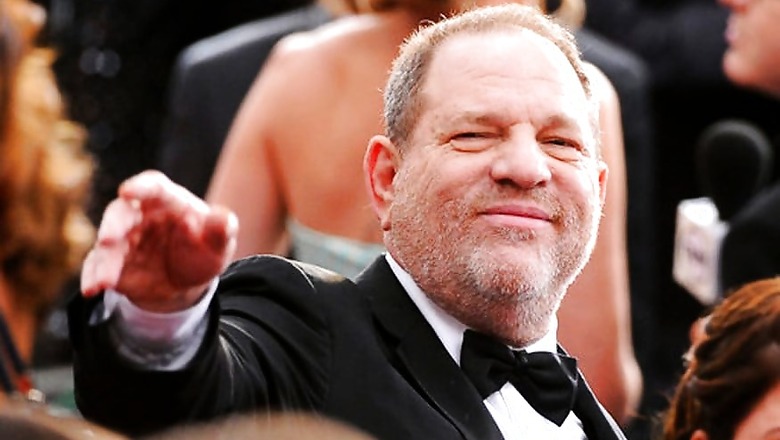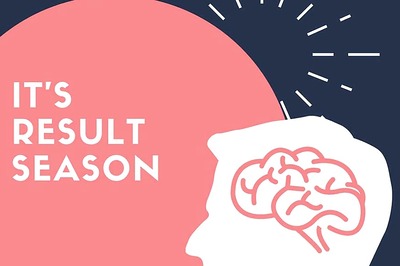
views
The 12 jurors took their seats around a long wooden table in a small room with two sets of windows and an array of carefully tended plants. One panelist, using a black marker, wrote the five charges against Harvey Weinstein on a whiteboard.
“Everybody got a couple minutes to unpack the last five weeks for everyone else,” one juror recalled. “There were different opinions. We were not unanimous anywhere on the first day.”
What happened over the next five days in the cramped room at the Manhattan Criminal Courts Building would mark the final downfall for a Hollywood mogul who had faced years of whispered accusations that turned into a worldwide scandal when several women went public in 2017 and said he had sexually harassed and assaulted them.
The accusations, revealed in The New York Times and The New Yorker, set in motion the #MeToo movement and made the once influential producer, known for Oscar winners like “Shakespeare in Love,” the embodiment of the casting couch culture in Hollywood and the abuse women have long suffered in the workplace.
In a series of interviews, three jurors provided an inside look into how the panel found Weinstein, 67, guilty of rape and criminal sexual assault while acquitting him of the two most serious charges: two counts of predatory sexual assault.
Though the debate was mostly civil, the stress got to many of them, and several got sick. “You are analyzing your own morality as viewed by the law in a room of 11 strangers. It is a very stressful dynamic,” one juror said.
The jurors spoke anonymously to protect their privacy. They declined to discuss the positions jurors took or to give a blow-by-blow account of disagreements, but they did describe how the panel made its decision.
In the end, the jurors said the panel gave little weight to the fact that Weinstein’s two main accusers — Miriam Haley, 42, and Jessica Mann, 34 — had maintained relationships with Weinstein after the attacks and later had sex with him.
The jury of seven men and five women decided instead to focus narrowly on whether Weinstein had broken the law at the time of the incidents. They spent little time discussing three other accusers called to establish Weinstein’s pattern of behavior.
Still, a second juror said the similarities between the attacks lent credibility to the women’s accounts. “Each act happened the same way,” the juror said. “Each person said the same thing.”
The three jurors thought Weinstein’s decision not to testify or to have his brother or close associates vouch for him probably hurt his case. The one friend who did testify, Paul Feldsher, did not help the defense, two jurors said.
Feldsher, a writer and former talent agent, said Weinstein was a “sex addict” whose appetite for women was “to put it mildly voracious.”
“He threw him under the bus,” the second juror said. “That didn’t help his case at all.”
Though the jurors said they were aware of the trial’s importance to the #MeToo movement, they said they concentrated on the evidence. The deliberations went on for 26 hours, exhausting them physically and emotionally, they said.
(BEGIN OPTIONAL TRIM.)
By the third day, the jury table was strewn with snacks — a box of Dunkin’ Donuts, takeout boxes of coffee, Sour Patch Kids, chocolates. Every day, the jurors, unable to go out for lunch during deliberations, ordered from the same deli. They took short breaks to venture outside, to smoke or just to get some fresh air.
They drew timelines on a second whiteboard. An oversized pad was brought in to write notes on. They scribbled down a partial verdict, then ripped it up, worried it might leak.
On the first day, the jurors settled on a system. First, they sought to understand the legal definition of each charge. Within the first hour, they asked the judge for an explanation of the law and definitions of several terms, including consent and forcible compulsion.
Then they tried to cut through what one called “the noise”— the parade of 28 prosecution witnesses, the ongoing relationships, the naked photo of Weinstein they had to view — to focus on two simple questions: Did each assault occur? Did it meet the definition of a crime?
“It was one instant, not a relationship, that we were analyzing,” one juror said.
(END OPTIONAL TRIM.)
Miriam Haley was credible
They started with count two, first-degree criminal sexual assault related to Haley, a production assistant on Weinstein’s show “Project Runway.”
One juror said Haley had convincingly remembered details like the children’s drawings on the wall of the room in Weinstein’s Lower Manhattan loft, where she said the producer had held her down and forcibly performed oral sex on her in 2006 while she protested.
The jury asked to see the floor plan of the apartment and listened again to her testimony, concluding that the evidence corroborated her account.
It helped Haley’s credibility, they said, that she had turned down Weinstein’s earlier sexual advances and that her later correspondence with him remained centered on jobs, the juror said.
“However unwise it would have been to get in that car, to go to his apartment alone at night,” that didn’t excuse a sexual assault, the juror said.
Doubts about Annabella Sciorra’s account
The jury turned next to the testimony of actress Annabella Sciorra, 59, who had said that Weinstein pushed into her Gramercy Park apartment in the early 1990s and raped her.
The predatory sexual assault charges — as set up by prosecutors in the indictment — required the panel to find that Weinstein not only had raped Sciorra but also had attacked either Haley or Mann. The verdict sheet confused some jurors, a second juror said, and the panel spent time coming to grips with an explanation of the charges.
But some on the panel had doubts about Sciorra’s account, the jurors said, which did not fit the pattern of the other assaults. Mann and Haley were young women eager to break into the film industry, whom Weinstein lured to meetings at a hotel or his apartment with the prospect of work.
Three other women, all actresses working as waitresses or models, also testified that Weinstein had enticed them to meetings about film roles, then assaulted them. Though he was not charged in those cases, the judge allowed their accounts to establish a modus operandi.
Sciorra, however, was an established actress who had gone to a dinner party with Weinstein. She testified he gave her a lift home, waited downstairs and then barged in. “That’s not his M.O.,” the first juror said.
(BEGIN OPTIONAL TRIM.)
Another reason for doubt, a third juror said, was that the alleged attack occurred 27 years ago, raising questions about the erosion of memory. Sciorra admitted she had been briefly addicted to Valium during that time.
“It was difficult to eliminate doubt,” the third juror said.
(END OPTIONAL TRIM.)
Still, some jurors were also troubled that Weinstein had hired Black Cube, an Israeli intelligence firm the producer used to investigate women like Sciorra, whom Weinstein believed were speaking to reporters.
“If you’re innocent, why are you trying to figure out who’s saying what?” the second juror said.
The complicated case of Jessica Mann
The jurors finally turned their attention to Mann, the most complicated of the witnesses: She and Weinstein had a yearslong relationship that included some consensual oral sex and masturbation. She described him as her “pseudo father,” and told a friend he was her “soul mate.”
Yet she testified that he had raped her early in their relationship at the Doubletree Hotel in Midtown Manhattan in 2013. She had invited him there for a breakfast meeting, but he rented a room.
The jurors spent roughly a day and a half poring over Mann’s account, the second juror said. Some members were worried by her long relationship with the producer. She said she last had oral sex with him in 2016 and admitted exchanging dozens of friendly and flirtatious messages with him. She also said Weinstein had raped her a second time in California six months after the first attack.
“We were kind of confused because she was in a relationship and it happened and she went back and it happened again,” the second juror said. In the end, however, he said, “We all felt the same way on her. We believed her.”
(BEGIN OPTIONAL TRIM.)
The juror said he tried to explain to other jurors that a person can be married and be raped by their spouse. Ultimately they decided to determine if Mann had consented that day and to set aside what happened before or after.
“A reasonable person should have understood that she was not consenting to the act in question,” the third juror said. Even though they had a relationship, “it doesn’t preclude her right to withhold consent, regardless of the behavior before or after.”
(END OPTIONAL TRIM.)
Still, while the jurors agreed Mann had not consented to sex at the Doubletree, they decided what had happened was not first-degree rape, because no force had been used. Instead they found him guilty of third-degree rape, which does not require “forcible compulsion.”
Late on the fourth day of deliberations, the jury sent a note to the judge that got everyone’s attention, asking if they could bring a verdict on the lesser charges but not the top charges. The jury was still weighing what to do about those, particularly about the predatory sexual assault charges.
By Monday morning, on the fifth day of deliberations, the jurors knew they were close. Anxiety was high. They went around the room, polling everyone, then asked to take a break outside.
In those final moments, one juror reviewed the final decisions with the foreman to make sure the complicated split verdict would be announced correctly. Someone rang the bell in the corner of the room to announce they were ready. Weinstein was about to hear his fate.
“Even if he is convinced of his own innocence, he’s got to regret the choices that he made,” the first juror said. If he doesn’t, he added, “then he is a monster.”
(Jan Ransom, Sharon Otterman and Laura Dimon c.2020 The New York Times Company)



















Comments
0 comment